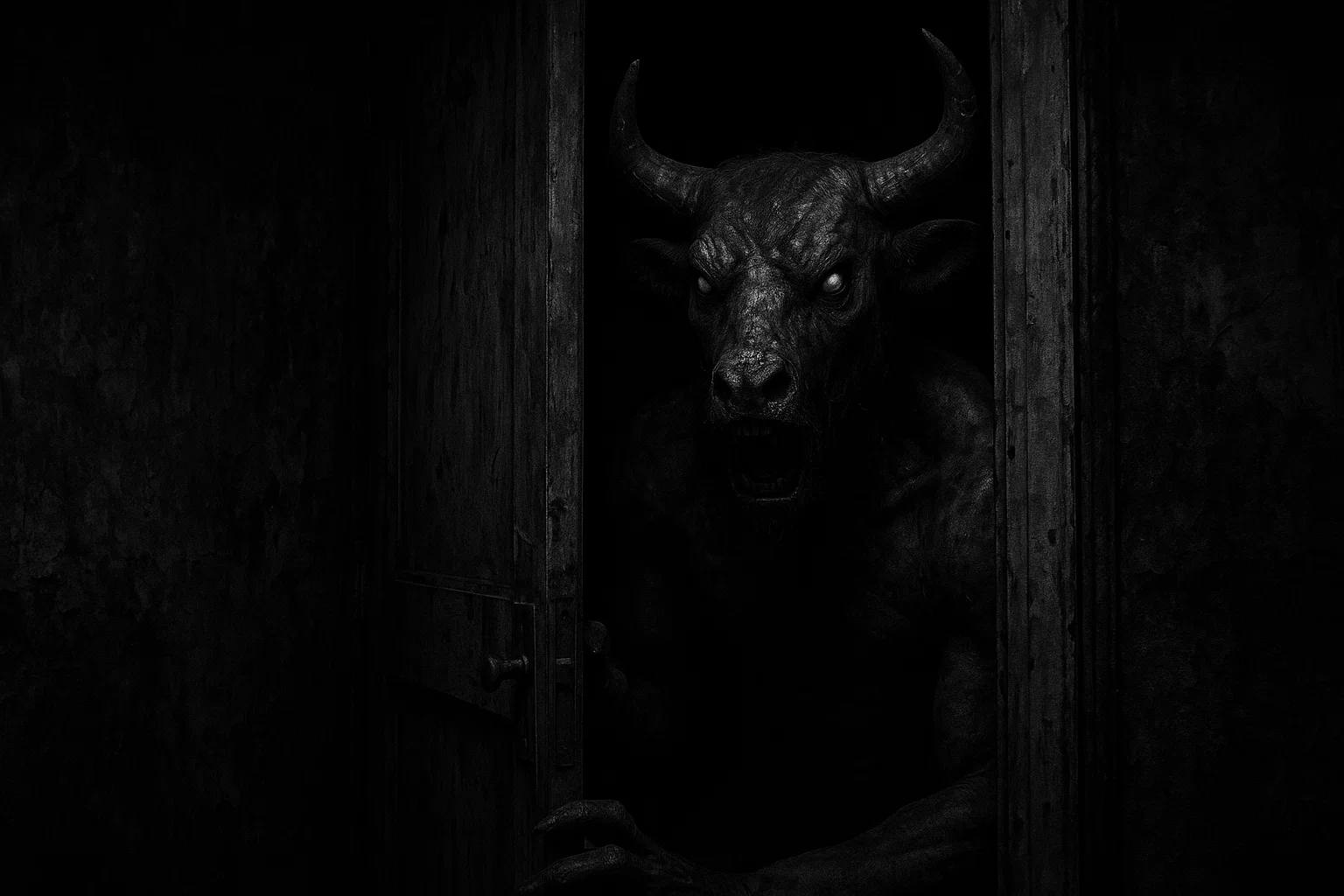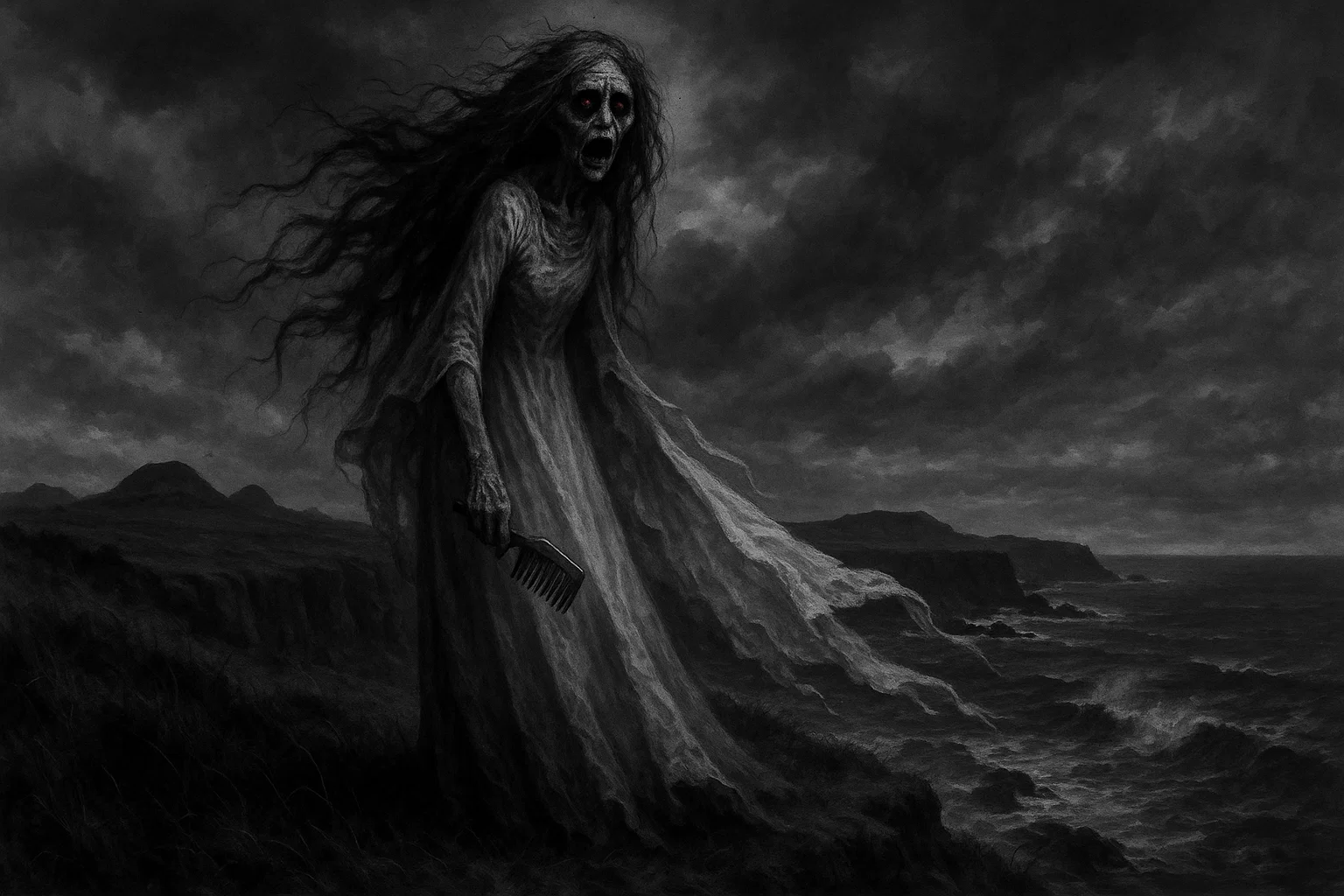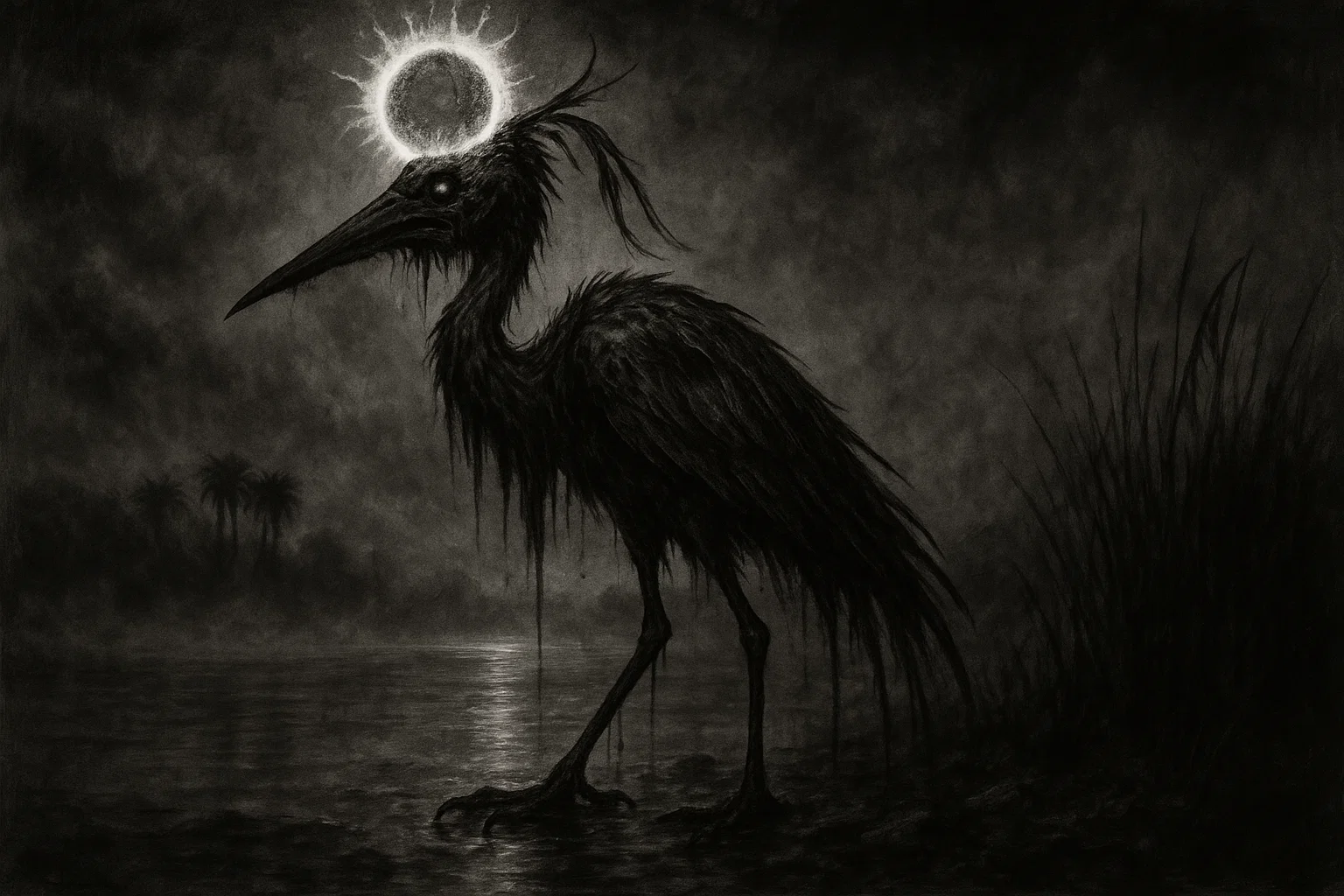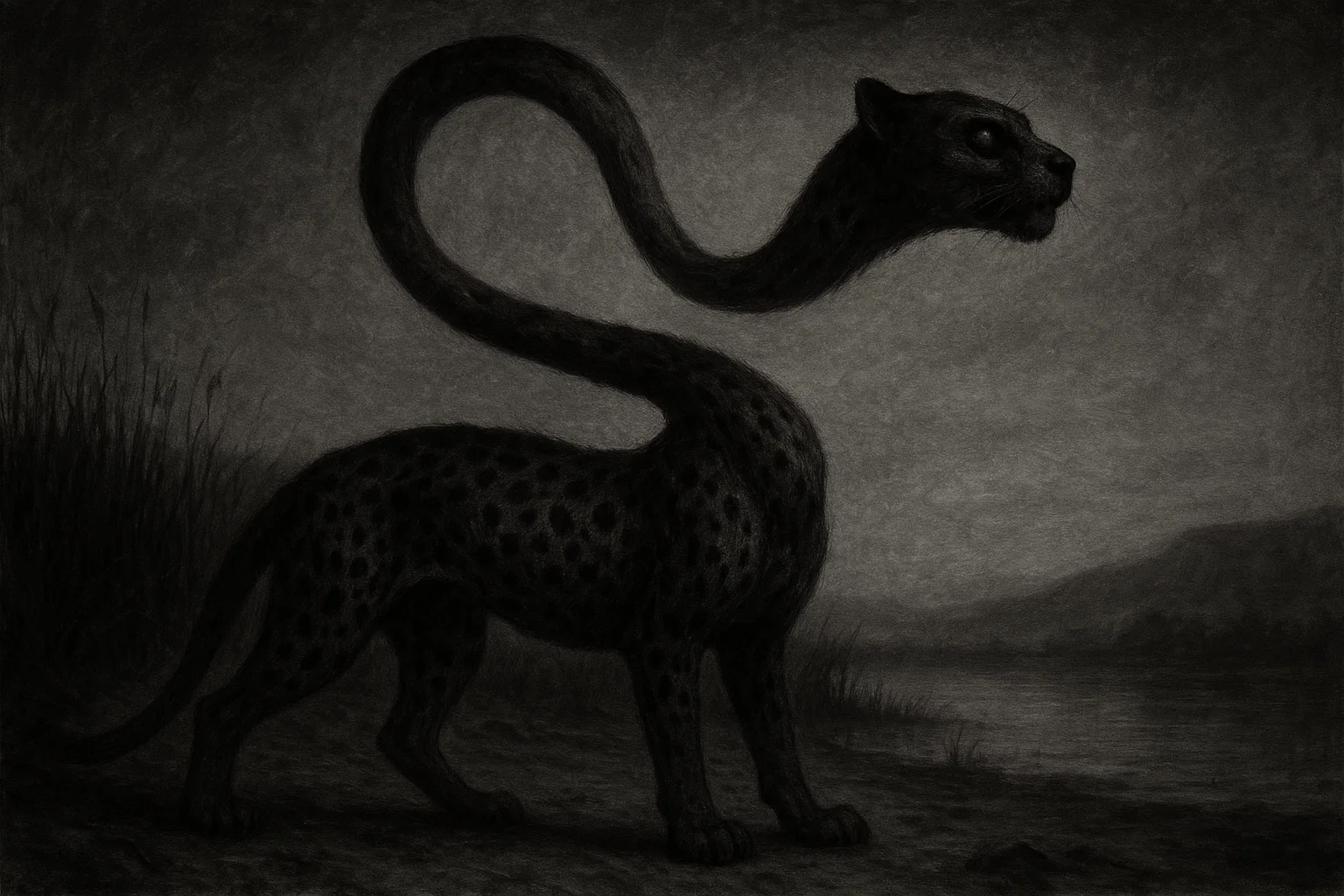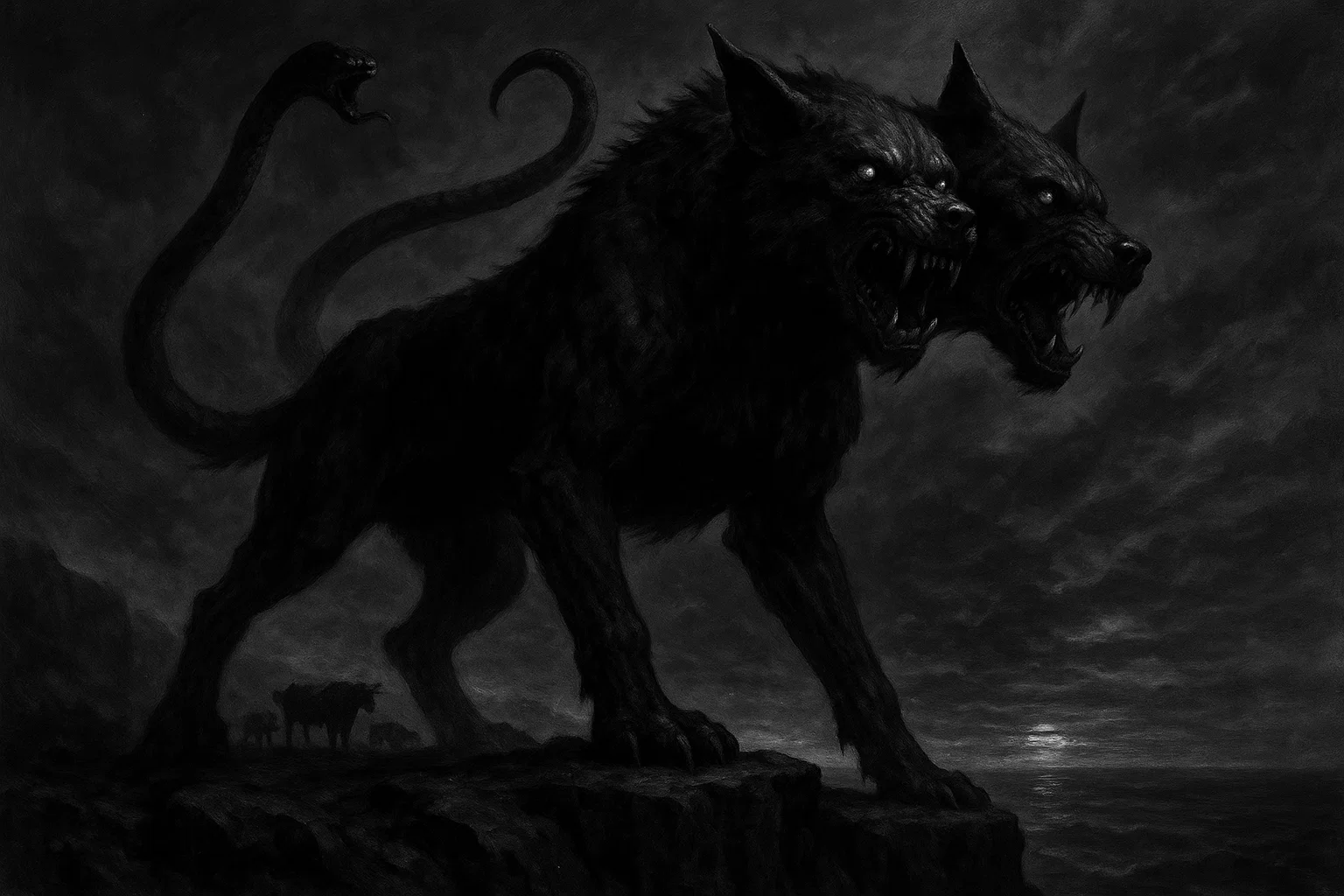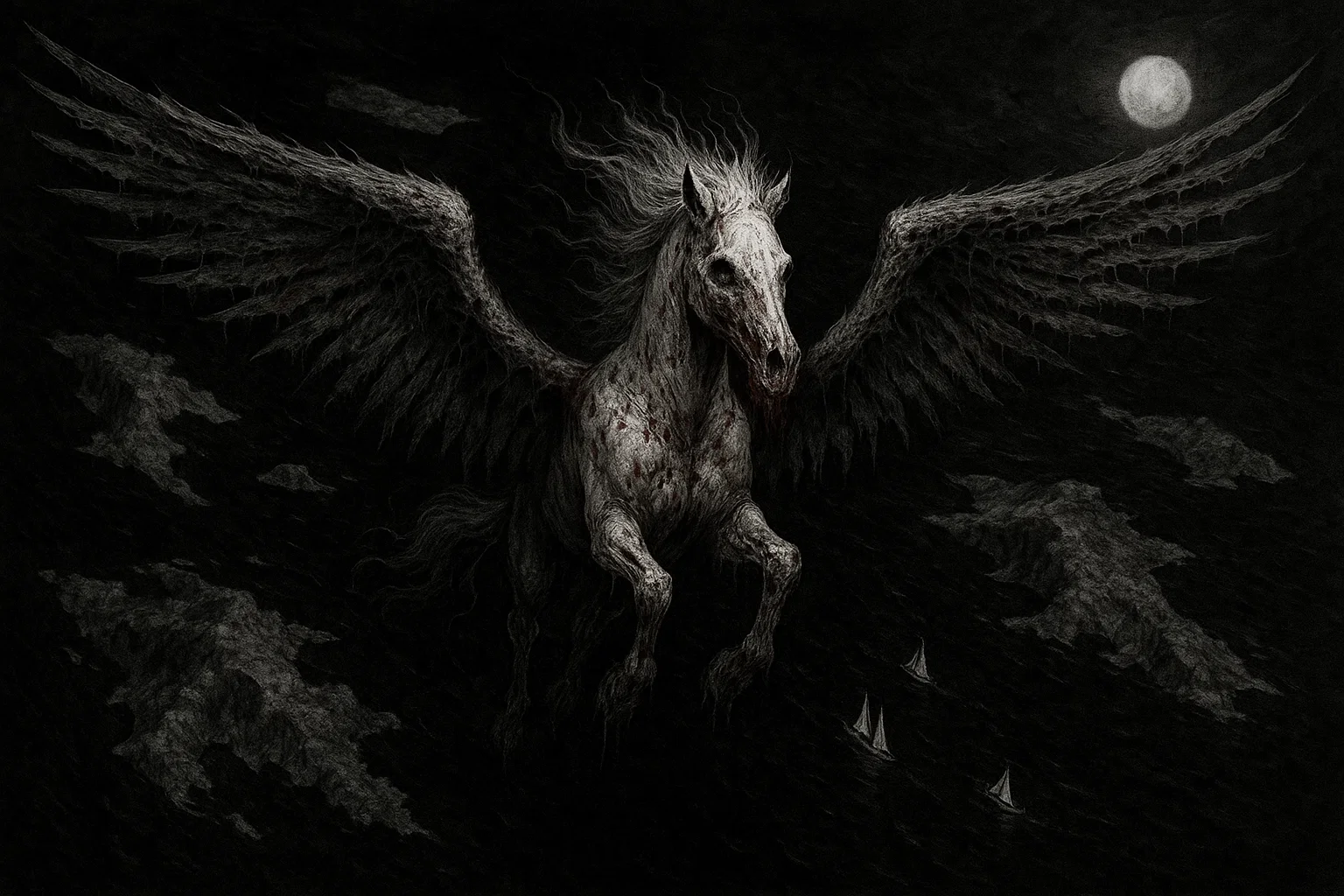The Gozu urban legend is a chilling cornerstone of Japanese folklore. Known as “Cow Head,” this eerie tale centers on a story so terrifying that hearing it can drive listeners to madness or death.
Its mysterious origins and haunting narrative captivate thrill-seekers and folklore enthusiasts alike.
This article explores the Gozu urban legend, delving into its roots, variations, and place among Japan’s creepiest myths.
Summary
What Is the Gozu?
The Gozu, or “Cow Head,” is a unique urban legend. Unlike ghosts or cursed objects, its terror lies in a story. This tale, called the Cow Head story, is said to be so horrifying that it overwhelms listeners with fear.
Some tremble uncontrollably. Others fall into comas or die. To prevent its deadly effects, the story was split into fragments. Each piece still carries a haunting power, making Gozu a legend about the danger of forbidden knowledge.
Etymology
The word Gozu comes from Japanese kanji: 牛 (go, meaning cow) and 頭 (zu, meaning head). In Japanese culture, cows symbolize strength but also the supernatural.
Gozu connects to Buddhist mythology, where Gozu and Mezu are ox- and horse-headed demons guarding hell’s gates. They serve Enma, the judge of the underworld, punishing sinners. This imagery ties Gozu to Japan’s spiritual traditions.
Globally, cow heads appear in other myths. In Spanish, Cabeza de Vaca (Cow Head) is the surname of explorer Álvar Núñez Cabeza de Vaca (1490–1559). While unrelated, the name shows the universal symbolism of bovine imagery.
A Ukrainian tale, “Cow’s Head,” features a kind woman rewarded by a talking cow head. Japan’s Kudan, a cow-bodied creature with a human face, predicts disasters. Similarly, ushi-onna, a cow-headed woman, foretold doom during World War II. These connections highlight Gozu’s place in a broader tapestry of bovine folklore.
You May Also Like: Nancy Mountain Ghost: Haunted by a Grieving Mother? Here’s Her Story
The Gozu Urban Legend
The Gozu urban legend, also known as the Cow Head story, is one of Japan’s most chilling tales. It centers on a narrative so terrifying that hearing it in full can cause listeners to tremble uncontrollably, fall into a coma, or even die from fright.
To prevent such catastrophic outcomes, the story has been deliberately broken into fragments, ensuring no one can hear the complete tale. This meta-legend, where the story itself is the source of terror, has spawned multiple variations, each adding to its eerie mystique.
The Main Story
In the quiet countryside of Japan, sometime in the 1980s, a school bus rumbles along a winding road in rural Fukushima Prefecture.
Inside, a group of elementary students grows restless, their chatter filling the air. The teacher, Mr. Tanaka, a kind but weary man in his forties, decides to entertain them with ghost stories to pass the time.
He starts with familiar tales of yurei (ghosts) and oni (demons), each met with giggles and gasps from the children. But as the journey drags on, the students demand something new, something truly scary.
Mr. Tanaka hesitates, his mind drifting to a forbidden tale he heard as a young teacher: the Cow Head story. He knows its reputation—rumors say it’s so horrifying that it can kill.
Yet, the children’s eager faces and persistent pleas convince him to share it. “Alright,” he says, his voice low, “but this story is different.” The bus grows silent as he begins.
“Long ago,” Mr. Tanaka starts, “in a forgotten village nestled in the mountains, a creature with the head of a cow appeared.” The students lean forward, eyes wide with curiosity.
He describes a monstrous figure, its bovine head grotesque, with hollow eyes that glow red in the dark. The creature, he says, brought death to anyone who saw it, its presence a curse that plagued the village for generations. The air inside the bus grows heavy, almost suffocating.
As Mr. Tanaka continues, the story takes a darker turn. He speaks of villagers driven mad by the creature’s gaze, their screams echoing through the night. The students’ excitement turns to unease.
A girl in the front row clutches her friend’s arm, tears welling in her eyes. A boy in the back whispers, “Sensei, stop!” But Mr. Tanaka seems unable to stop. His voice becomes monotone, his eyes glaze over, as if the story has taken control of him. The children’s pleas grow louder, their voices trembling with fear.
The terror escalates. The students begin to shake uncontrollably, their faces pale with dread. Some faint, their bodies slumping in their seats. Others scream, their cries piercing the silence.
The bus driver, affected by the story’s power, loses control, his hands trembling on the wheel. The bus swerves violently, then stops abruptly in the middle of the road.
Hours later, when a passing motorist discovers the bus, the scene is one of horror. Many students lie unconscious, their eyes rolled back, their bodies still twitching as if gripped by an unseen force.
The driver is slumped over the wheel, unresponsive, his face frozen in terror. Mr. Tanaka sits motionless, staring blankly, unable to speak. Some accounts claim half the students died that day, their hearts stopped by sheer fright.
Others say those who survived never spoke of the story again, haunted by fragments of the tale that lingered in their minds.
This version of the Gozu urban legend is particularly haunting because it grounds the supernatural in a familiar setting—a school bus trip. It transforms a mundane activity into a nightmare, emphasizing the idea that danger can lurk in the most unexpected places.
The teacher’s inability to stop telling the story adds a layer of inevitability, suggesting that once the Cow Head story begins, it cannot be escaped.
You May Also Like: The Crying Boy Painting Curse: Coincidence or Evil?
Additional Variations
The Gozu legend has evolved over time, with several variations adding layers of terror and intrigue. Each version introduces unique settings and consequences, reinforcing the story’s deadly reputation.
The Village Storyteller
Set during the Edo period (1603–1868), this historical variation tells of a wandering storyteller who arrives in a remote village in what is now Fukushima Prefecture.
Hungry and tired, he offers to share tales in exchange for food and shelter. The villagers, eager for entertainment, gather around a fire as he begins. His stories of yurei (ghosts) and oni (demons) captivate them, but he saves the Cow Head story for last.
As he starts, the mood shifts. The tale describes a cursed village where a cow-headed creature slaughters residents under a blood-red moon. The villagers’ faces grow pale, their breaths shallow. Some try to leave, but their legs won’t move, as if rooted by the story’s power.
By dawn, many lie dead, their bodies trembling even in death. The storyteller vanishes, leaving behind whispers that he was a yokai spreading the cursed tale.
Locals avoid the village to this day, claiming the story’s echoes linger in the wind. This variation ties Gozu to Japan’s oral storytelling tradition, where kataribe (storytellers) were both revered and feared.
The Forbidden Book
In the 1990s, rumors spread of a cursed book hidden in a Tokyo university library, titled simply “Cow Head.” A curious student, Hiroshi, discovers it while researching folklore for a school project.
Ignoring a librarian’s warning about its danger, he reads aloud to his study group. The story describes a cow-headed demon that haunts dreams, driving victims to madness with its glowing eyes and guttural whispers.
Hiroshi’s voice falters as he reads. He collapses, foaming at the mouth, his eyes wide with terror. His friends, who heard only fragments, suffer nightmares of a bovine monster stalking them. One friend, Yuki, vanishes days later, leaving a note: “It’s watching me.”
The book is said to be locked in a vault, its location kept secret to prevent further tragedy. This modern variation reflects fears of forbidden knowledge in an age where information is easily accessible, making the Cow Head story a symbol of curiosity’s dangers.
The Haunted Festival
In Hokkaido, during a 1975 summer festival, a performer decides to recite the Cow Head story as part of a ritual to honor local spirits. The tale, meant to be a dramatic flourish, describes a cow-headed entity that curses a village with plague and despair.
As the performer speaks, the crowd grows restless. Some flee in panic, others collapse, clutching their chests in fear. The festival ends in chaos, and the site is abandoned.
Locals claim the area is haunted, with whispers of the story heard on moonless nights. This variation blends Gozu with Japan’s festival culture, suggesting that even sacred traditions are not immune to its terror.
It also ties the legend to a specific time and place, grounding it in a historical context.
You May Also Like: The Gashadokuro: Japan’s Giant Skeleton Yokai of Vengeful Spirits
The Radio Broadcast Incident
In the 1990s, a radio show called “Midnight Mysteries” attempts to explore urban legends. The host, eager to captivate listeners, decides to read a fragment of the Cow Head story live on air. Halfway through, he grows ill, coughing and gasping for air. He throws the script away, ending the broadcast abruptly.
Two days later, he suffers a mysterious fall, requiring seven stitches. Listeners report nightmares after hearing the partial tale, fueling rumors that even fragments of Gozu are dangerous.
This version highlights the legend’s adaptability to modern media, showing how it can infiltrate even a radio broadcast.
The Cursed Manuscript
A lesser-known tale from the 17th century involves a monk in Kyoto who discovers a manuscript labeled “Cow Head.”
Tasked with documenting forbidden tales for a temple archive, he reads it and is driven to madness. The story, he writes in his final notes, describes a cow-headed demon that feeds on fear, growing stronger with each victim’s terror.
The monk spends his final days trembling, muttering about glowing eyes in the dark. The manuscript is hidden, but rumors persist that it resurfaces every few decades, bringing death to those who find it.
The Ghostly Encounter
In a modern retelling from the early 2000s, a group of teenagers in Osaka dare each other to tell the Cow Head story during a sleepover.
One girl, Aiko, begins, describing a cow-headed figure that visits a girl in her dreams, whispering curses that drive her to insanity. As Aiko speaks, the room grows cold. Shadows flicker on the walls, taking on bovine shapes.
The group begs her to stop, but she continues, entranced, her voice growing hollow. Suddenly, the lights go out, and Aiko screams. When the lights return, she’s unconscious, her face frozen in terror. The others refuse to speak of the incident, claiming a cow-like shadow lingers in their nightmares.
Origins and Authorship
The Gozu urban legend’s origins are unclear, adding to its mystique. Some trace it to the Edo period, when oral storytelling was common.
Storytellers, or kataribe, shared tales of yokai and curses. Gozu may have emerged as a cautionary tale about dangerous knowledge. Others suggest a 17th-century monk created it to warn against hubris. No records confirm this.
In modern times, some attribute Gozu to Sakyo Komatsu (1931–2011), a science fiction writer. Komatsu’s works, like Japan Sinks (1973), explore fear and mystery.
However, no evidence links him to Gozu.
A 1990s rumor claimed a horror anthology included the story, but no such book exists. The lack of a clear author makes Gozu a collective creation, shaped by Japan’s oral and written traditions. Its ambiguity fuels its enduring appeal.
You May Also Like: Ghost Taxi Passengers of Japan: Real Hauntings After the 2011 Tsunami?
Gozu vs Other Japanese Urban Legends
The Gozu urban legend stands out for its unique terror. Comparing it to other Japanese myths highlights its distinct nature:
| Legend | Type | Setting | Consequences |
|---|---|---|---|
| Hanako-san | Ghost | School bathroom | Fright, death |
| Kuchisake-onna | Ghost | Urban streets | Death if answered wrong |
| Teke Teke | Ghost | Railways, stairs | Death by dismemberment |
| Aka Manto | Spirit | Public restroom | Death or disappearance |
| Hachishakusama | Yokai | Rural villages | Kidnapping, death |
| Okiku Doll | Cursed Object | Mannenji Temple | Haunting, possession |
| Red Room | Internet Curse | Online pop-up | Madness, suicide |
| Human Pillow | Creature | Bedrooms | Suffocation, death |
| Long Hair | Ghost | School corridors | Death, insanity |
| Elevator Game | Ritual | Building elevator | Entering other dimension |
| Inunaki Village | Cursed Place | Kyushu forest | Disappearance, madness |
| Hitobashira | Historical Curse | Construction sites | Haunting, bad luck |
Gozu is unique. Its horror comes from a narrative, not a physical ghost or object. This sets it apart from Hanako-san or Okiku Doll. Unlike Teke Teke (tied to railways) or Aka Manto (bathrooms), Gozu has no fixed location. Its terror can strike anywhere.
Like Red Room, Gozu involves a cursed medium (story vs. website). Both tap into fears of curiosity.
Gozu shares themes with Hitobashira, where human sacrifice brings curses. Both reflect Japan’s spiritual beliefs.
Is Gozu Real?
The Gozu urban legend lacks evidence. No deaths are linked to the Cow Head story. Its power lies in psychology, exploiting fears of the unknown. The tale’s fragmented nature and lack of a full text make it a perfect urban legend—mysterious and unverifiable.
Today, Gozu thrives in pop culture. Films and stories draw on its chilling premise. Its adaptability keeps it alive, ensuring the Gozu urban legend remains a haunting part of Japan’s folklore.

